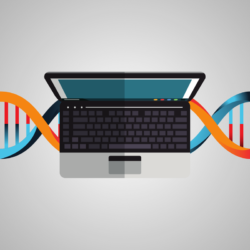
As long as there has been an internet, there have been people who try to manipulate it. The bigger the Internet gets the higher risk it becomes for intrusions, phishing, viruses, worms, and fraud. While the Internet as we know it today wasn't really invented until the late 1980s, computers have been networked in a sort of "mini-Internet" for a bit longer. The earliest network 'hacks' weren't malicious in nature as we see them today. Instead, they were experiments or demonstrations to learn more about how computers spoke to one another. Then, we see a shift from education to recreation. Before it became a widespread and vicious criminal activity, it was often used for pranks. While mischievous, it wasn't meant to do lasting harm. In fact, many hackers in the early 1990s hacked computers just to prove they were smart enough to do it.
1970
The 1970s saw the growth of computer networks. In 1971, a man named Bob Thomas created a virus named Creeper which pushed a message across a series of computers. The message was: I'M THE CREEPER: CATCH ME IF YOU CAN. It was labeled an experiment. Thomas wanted to learn more about the capabilities of computer networks. Shortly after Creeper's release, Ray Tomlinson (that's the guy who invented email, by the way) sent out the very first antivirus software which he named Reaper. Instead of pushing lines of code through the computer network, Reaper replicated itself across the system and removed copies of Creeper once it came across them.
1980
While the Internet is still small in the 1980s, it's now common enough that Internet security becomes more of a necessity. This is the birth of hacking as we define it today. Some famous worms at that time were Brain in 1986 and even more notorious, the Morris Worm in 1988. Robert Morris, a student at Cornell University, created several lines of code that replicated wildly out of control. It spread to computers worldwide and crashed around 6,000 computers (10% of the computers linked via the Internet at the time). Morris was the very first person to be convicted under the Computer Fraud and Abuse Act (established in 1986). This act of Congress established legal sanctions against data theft, unauthorized network access, and other computer-related crimes.
1990
It doesn't get any better from this point on. The 90s is the beginning of malware. AOL is the victim of the first widespread phishing attacks, which allowed hackers to steal usernames and passwords to the popular web portal. The 90s was also the birth of tracking cookies - the start of advertisers monitoring our website browsing behavior (it wasn't invented by Facebook or Amazon!). 1996 was the year Flash players were invented. While it changed the way websites looked and completely expanded the use of the Internet - it also allowed hackers to take remote control of computers across the globe.
2000
The 2000s is when we see cybercrime turn into a major criminal enterprise targeted at a monetary gain. Security flaws are found in Microsoft computers and new worms are created to manipulate those flaws. Millions of computers are affected, and it's where the rumor that Mac computers cannot get viruses began. While it may have been true in 2000, it isn't any longer. Any computers of any brand and build can be infected.
2003
This year is significant in our modern history. The amount of data collected in this single year surpassed the amount of all information created in the rest of human history combined. That number is only growing as the Internet allows us to share information with the world around us. Even in 2003, the Internet was central to commerce and culture worldwide. While two classrooms from separate parts of the world can now instantly take part in discussions as if they were in the same room, the increase of Internet use has its downsides. The more devices connected to the Internet, the more entry points are created for attacks.
2007
Smartphones are created this year. They weren't much like we have today, but it was the start of the Internet infiltrating everyone's pocket. This ushered in a brand new era of privacy intrusion and snooping from everyone - police to jealous spouses. Of course, smartphones are now used by giant corporations to snoop on our browsing history, favorite shopping locations, and other day-to-day activities so they can better tailor their advertisements to their customers.
2014
As Internet technology advances, so do our devices. Computers run the majority of vehicles built in the past 10 years. Nearly all use wireless technologies that allow for intrusions. "Car hacking" may not be commonplace, but it is happening.
Today
With huge breaches like Target and massive trust-loss like Facebook, cybercrime is constantly in the news. It's unavoidable. Cybercrime is so complicated and sophisticated that it is impossible to prevent. The emphasis is now on prevention and recovery instead of finding and reprimanding the criminals behind the crime. It's more important than ever that devices are kept as secure as possible with ant-virus, encryption, and other best practices. But, how an organization responds after a breach is far more important. No one can prevent every accident, but we can control how we manage the aftermath. Every company, large and small, must be prepared (and practiced!) in the disaster recovery response process.
If you are unsure of your disaster recovery plan, review it. If you're unsure if you even have one, contact your IT support team to get your plan ironed out or created. Trust us, this one document will save your business and your reputation. You don't want to be without it.



